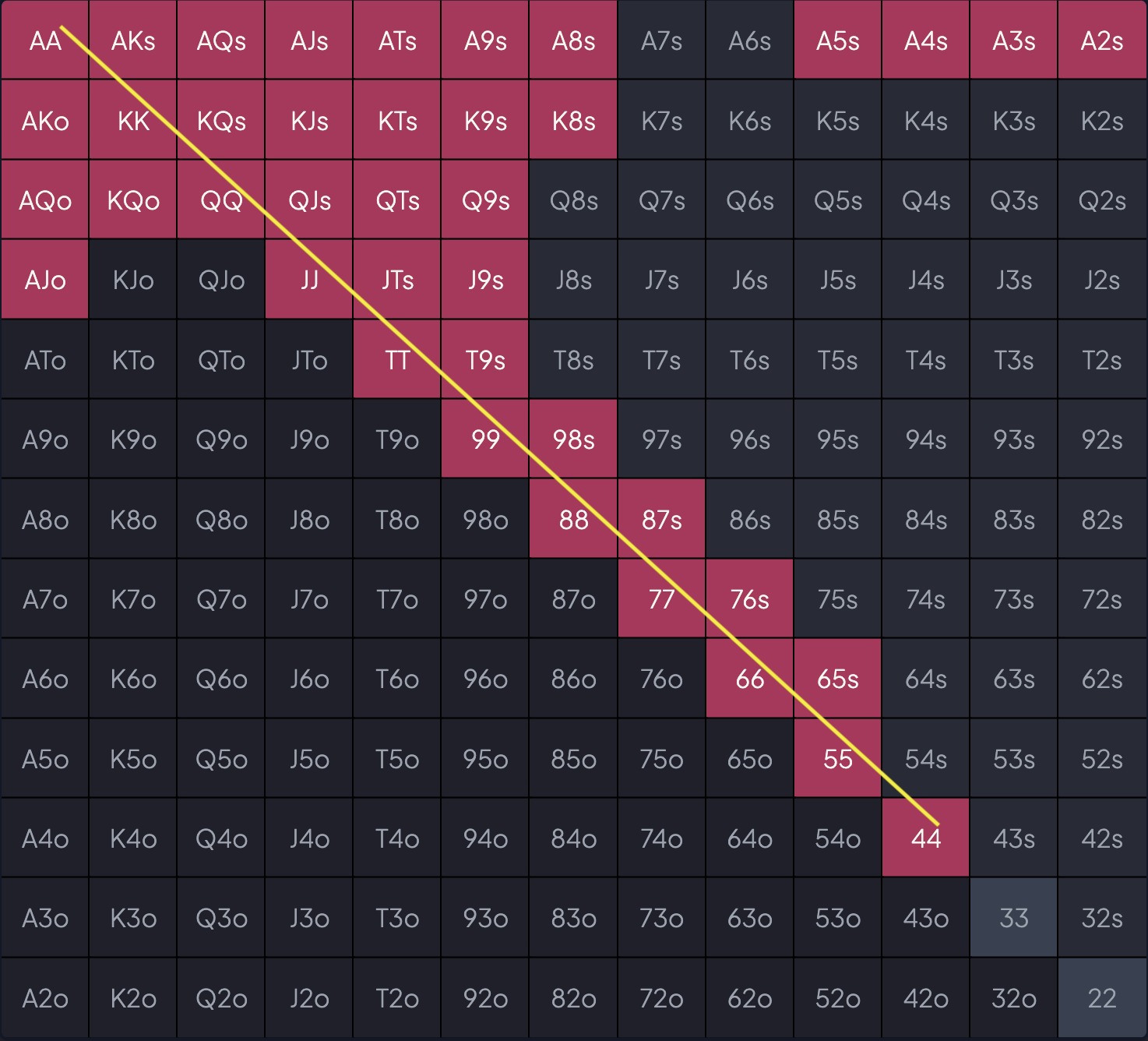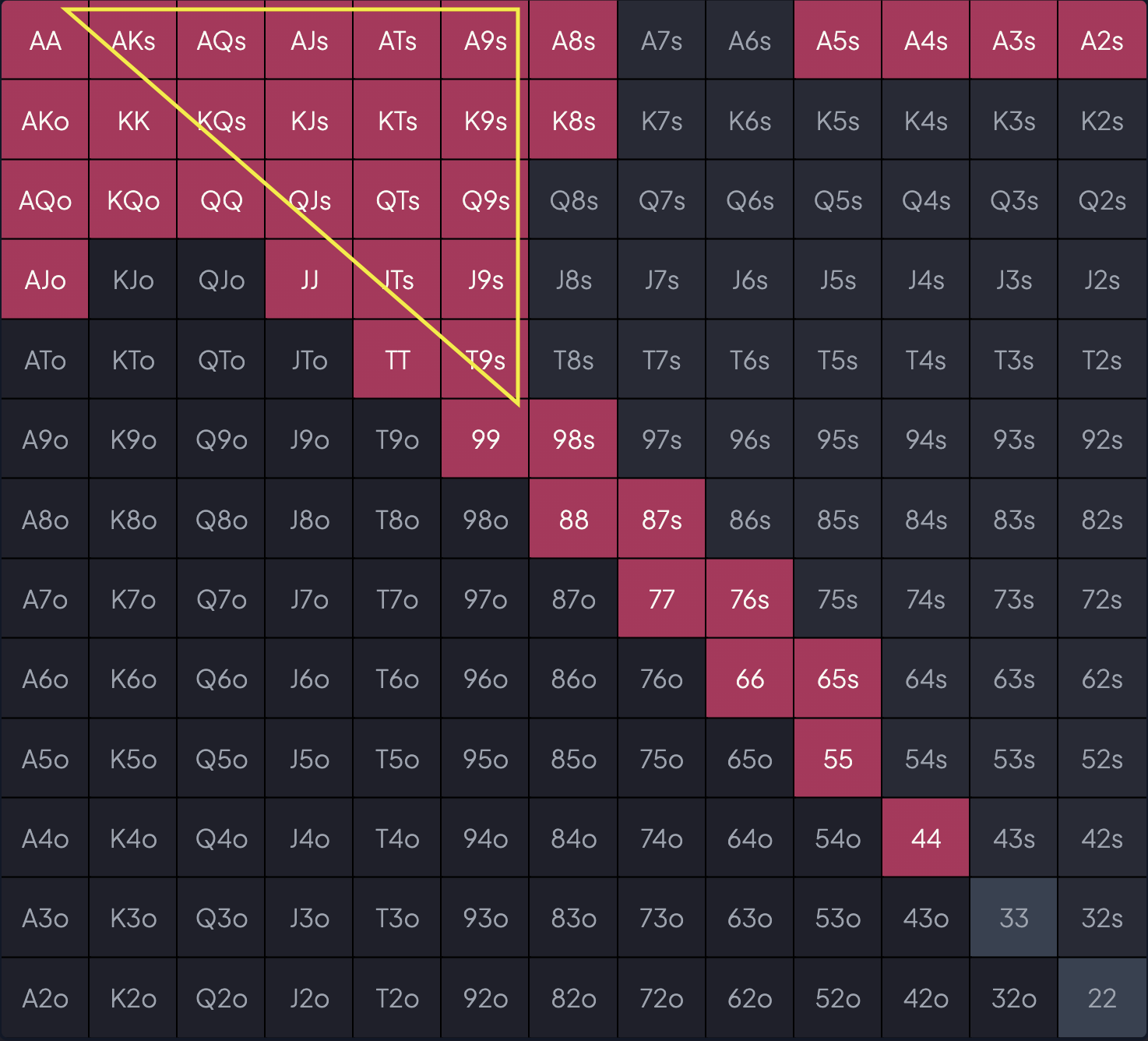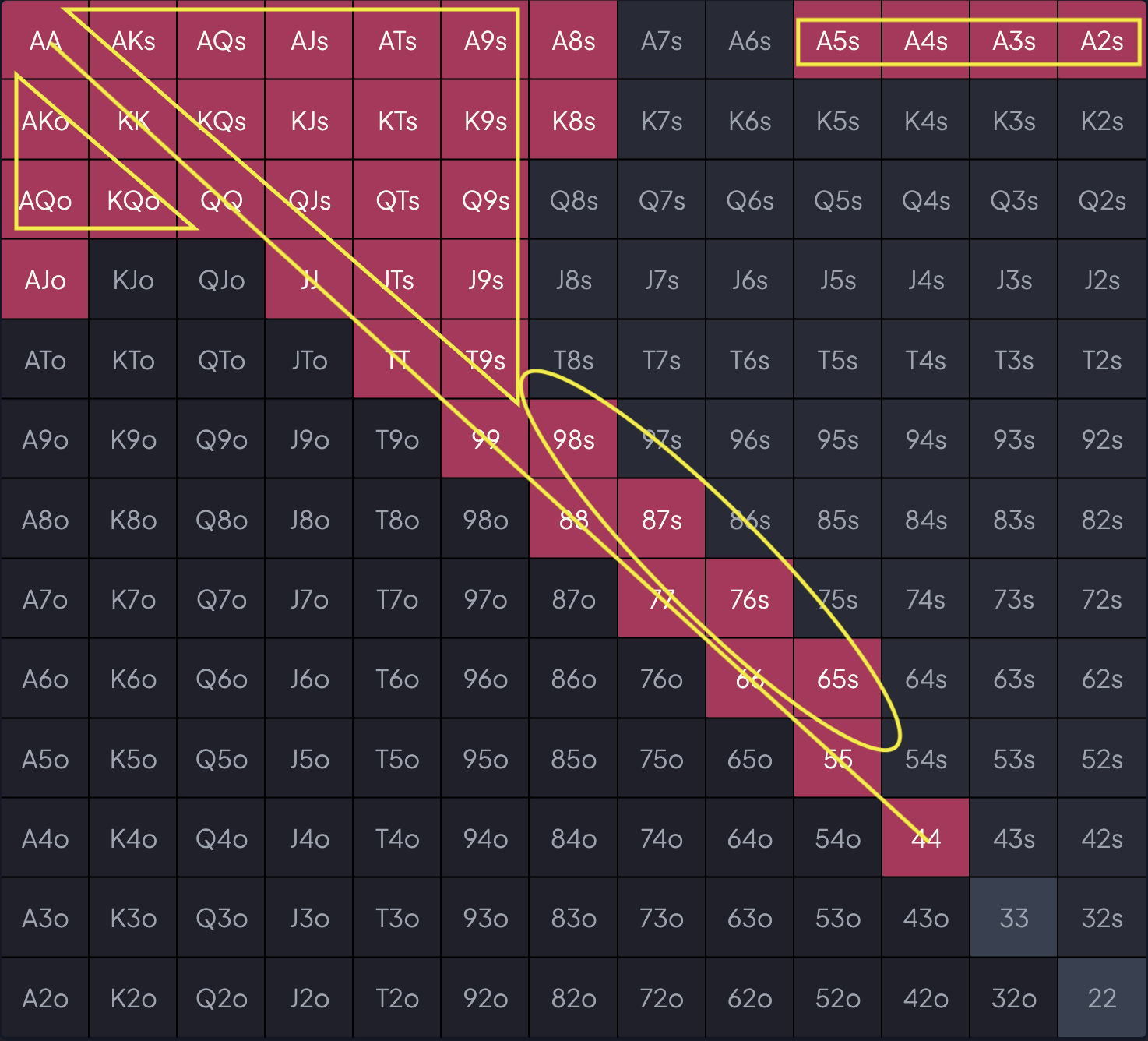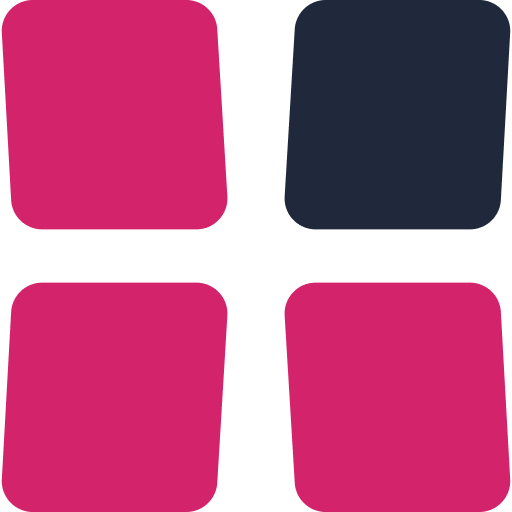How to Remember Ranges Efficiently
Are you struggling with remembering your ranges at the tables? You’re not alone. Having every single starting combo in every single situation in your head ready to go is not a simple task. But there are ways to drastically simplify the problem and guarantee you a high minimum accuracy while playing. In this article, we’ll look at a concept to remember your ranges efficiently using logical groups.
Grouping combos into logical areas
Let’s have a look at an example range:

This range is taken from our 6max cash game exploitative opening strategy. So how do you remember all these combos? It seems obvious to group together the pocket pairs, but what about all the other combos? How can we make this easier?
The trick here is not to remember every single combo, but to group your opening combos into logical areas. During this process we will reduce the amount of information we have to remember drastically. Let’s break down the range above into logical areas to see this concept in action.
Pocket Pairs

Pocket pairs might be the most obvious category, because most of the time you’ll use them in a linear fashion. When you open JJ, you’ll also open QQ, KK and AA (this is not necessarily true for 3 betting and beyond, but it’s a good rule of thumb, especially when talking about opening ranges). So we can reduce this to one question: What is the lowest pocket pair that we open?
- Pocket 4s
So we open every pocket pair that has at least the rank of 4 (so 55, 66, 77, 88, 99, TT, JJ, QQ, KK, AA are included, but 22 and 33 are not).
Group the main bulk of suited hands
Grouping hands requires to look for patterns and it so happens that most of the time you can draw triangles or lines to create areas. Let’s try and cover as much ground as possible with the simplest shapes. In this case, there is a large area of hands we open here, that all share the same properties:

These hands are suited and this area has no folding gaps in it.
So we got our first triangle and it covers quite a bit of the whole opening range (34% of all combos). If we try to describe this area as precisely and condensed as possible, we can see that we’ve covered every suited hand where the lowest card is a 9 or higher. We can reduce this to:
- Open every 9
Here’s one concept that you need to remember:
When we say “every 9”, this means every hand where the lowest card is ranked a 9 or higher. So, for example, 10♠️9♠️ is included in this group, as well as A♠️J♠️, because A and J are both ranked higher than a 9. But 9♠️8♠️ is not included (9 is not the lowest rank in your hand), nor is 8♠️4♠️ (both cards are lower than a 9).
This works for all triangular shapes that have their diagonal edge bordering on the pocket pairs (suited of offsuited doesn’t matter in this case as we will see later). No matter where you draw your vertical line, the rank you draw the line on will always be your lowest card.
Let’s move on to the next group.
Low Suited Aces

At first glance this might be a bit harder to categorize: What do these combos have in common? If we think about made poker hands like two pair, sets, etc. we start to understand how these ranks are connected: They can form the wheel straight, or A-5 straight. So we can call this area
- Open every Wheel Ace
Grouping hands into logical areas is a somewhat creative task. But it’s worth the work, because it will not only help you remember your ranges, but also understand them. Seeing that you open every wheel Ace also has a strategical meaning: It plays better postflop than A6s oder A7s, because your hand can flop a straight or straight draws more easily than A7s. So your primary goal with these hands is to flop a straight or a straight draw (aside from the nut flush of course).
Suited Connectors

Connectors can be more difficult to group (especially if there are gappers in play), but in this case it’s fairly easy. We open every connector from 65 to 98, so we can call this area:
- Every 9 to 6 Connector
But this is already harder to remember. You have to remember two edges here, the 9 and the 6. Luckily, in our first area, we found that we open “every 9”, which also includes connectors, namely T9s, JTs, QJs, KQs and AKs. We can also see that there is no folding gap between T9s and 98s. So we can simplify the connector area even further:
- Every 6 Connector
Meaning we open every suited connector where the highest rank is at least a 6. This overlaps with the suited hands area, but that’s totally fine.
If you find it confusing that one number refers to the lowest rank (with triangle shaped areas) and the other one to the highest rank (with connector areas), you can instead say every 5 connector, meaning every zero gap connector where the lowest rank is at least a 5.
Offsuit Hands
With offsuit hands we can use the same exact triangular strategy we used with the suited hands. But this time we don’t care about the vertical line, but the horizontal line.

Here we look for the same base rank as with the suited hands, but horizontally, not vertically. And we can see that the lowest rank is the Queen, so we open
- Every offsuit Queen
Bringing it all together

If we combine all these areas, we get a pretty good idea of our opening range from UTG:
- Pocket 4s
- Every 9
- Every Wheel Ace
- Every 6 Connector
- Every offsuit Queen
This is way easier to digest than remembering every single combo. We reduced the amount of information from 43 combos to 5 groups. Not just that, we also added some strategical meaning to the groups, i.e. the Wheel Ace group.
Here’s another tip to keep the amount of information as low as possible: If a group doesn’t mention suited or offsuit, it’s always suited. If we say “Every 9”, we mean every suited 9, but if we say “Every offsuit Queen”, we mean every offsuit Queen. Since most of the combos you’ll be playing are suited, it’s easier to just omit it and only specify if you’re talking about offsuit hands.
With all our areas in place, let’s reduce our rather complicated looking UTG opening range into one sentence:
- Open pocket 4s,every 9, Wheel Ace, 6 Connectors and offsuit Queen from UTG
The missing combos
You might have noticed that there are three combos that we haven’t grouped into any area, those being AJo, A8s and K8s.
It’s not always possible to group every single combo into a logical area. The goal of this exercise is to reduce the amount of information you have to remember, while keeping the most important parts. So there is a good chance that you won’t cover your whole range with this approach. But that’s okay. We covered 93% of the combos we are opening. So by definition, implementing this memorization technique will guarantee you a 93% opening accuracy from UTG.
Not opening K8s or AJo is not the end of the world, they are at the edge of your range anyways, so their impact on you EV is minimal.
Key Takeaways
Remembering the minute details of every range is very hard. But if you group your hands into logical areas, you can drastically reduce the amount of information you have to remember. This will not only help you with remembering your ranges, but also with understanding why you play them.
You won’t cover your whole range with this approach, but the biggest chunks of it and this in return will guarantee you a minimum opening accuracy.
